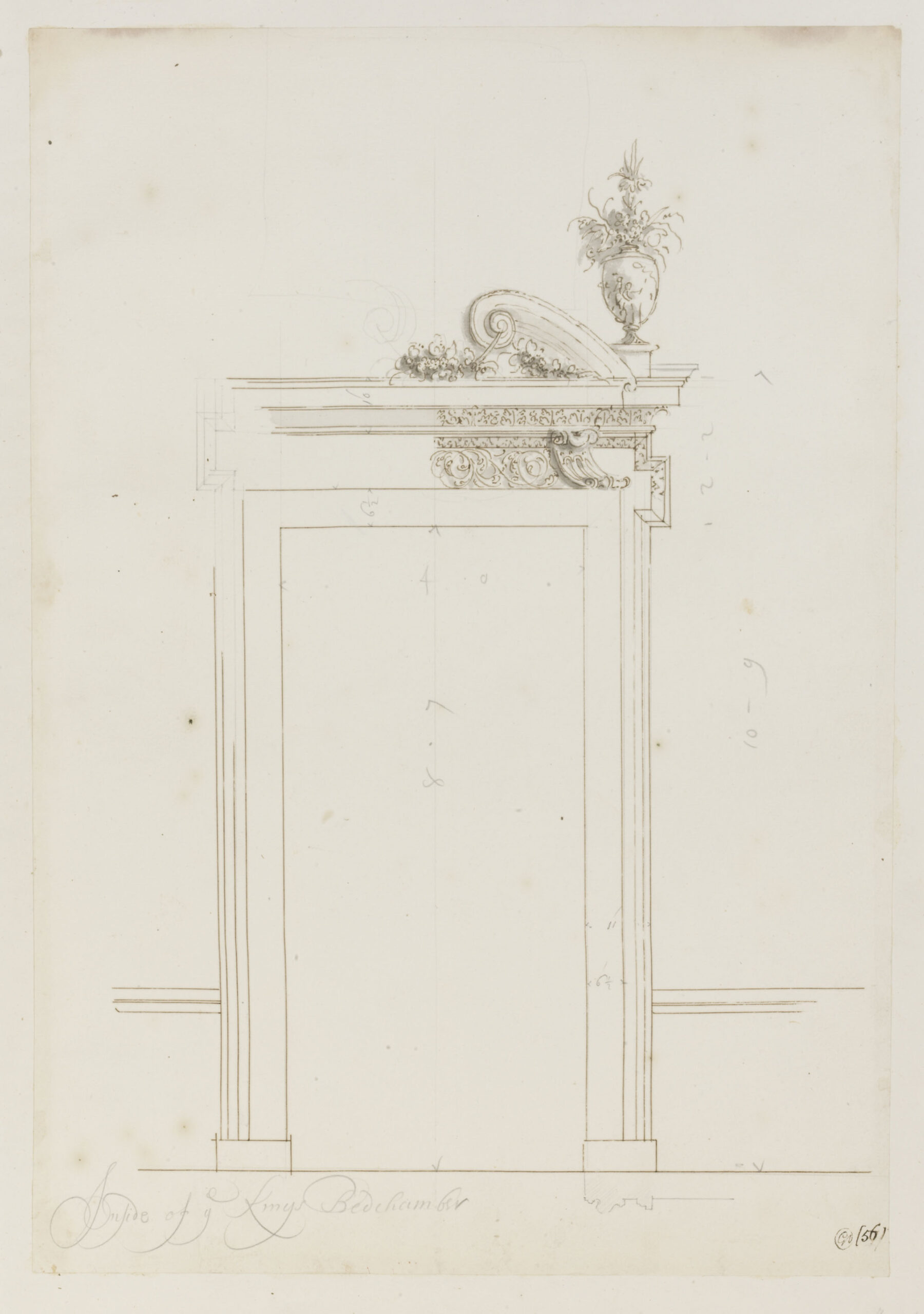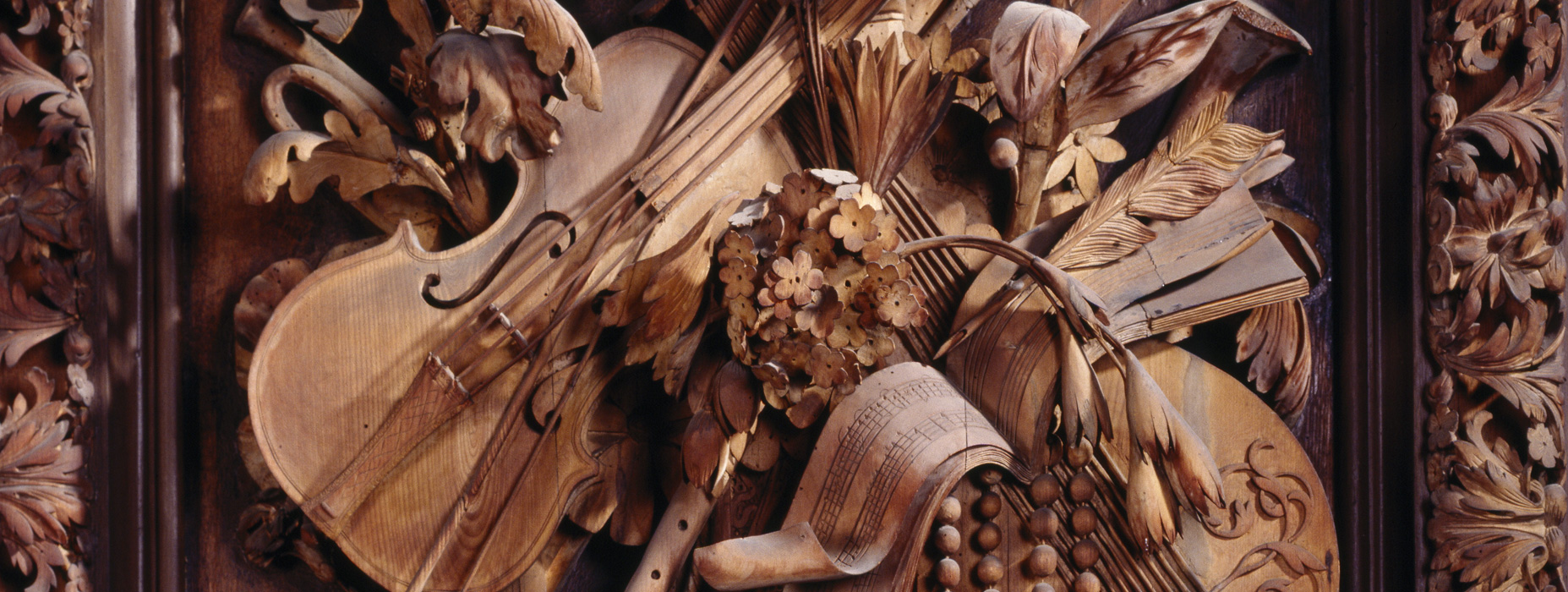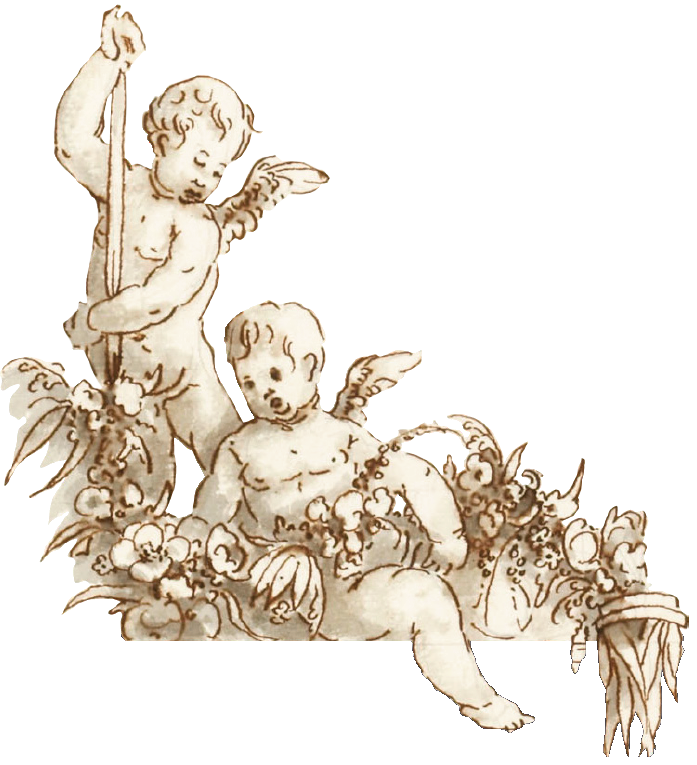Design for King’s Bedchamber Doorcase with Pediment
Creator(s): Grinling Gibbons 1648-1721, with inscriptions and probably one amendment by by Nicholas Hawksmoor 1661-1736
Date: Undated, but datable c.1693-94, with pencilled amendments datable c.1699
Accession Number: SM 110/57
Dimensions: 418mm x 219mm
Materials: Pen and brown ink over graphite under-drawing with grey wash and additions in graphite; on laid paper
Location: Sir John Soane's Museum
Credit Line (copyright notice for material) :
Online Catalogue Entry : http://collections.soane.org/OBJECT309

NOTES ON THE ARTWORK
Hawksmoor’s inscriptions are in a thicker, heavier graphite than the under-drawing of the design. They appear to have been added to an already complete design, prior to its execution in modified form. The only part of the design that appears to be in the same graphite as the inscriptions is the moulding that has been added to the top of the cornice. With this moulding the distance from the top of the cornice to the bottom of the ‘ear’ of the architrave is the 2 feet 2 inches dimension that Hawksmoor has inscribed immediately to the right. Distinct from this addition are the finer graphite lines of the plan of the architrave and the alternative scheme for a higher ear to the left-hand architrave. Both appear to belong to Gibbons‘s original design. Above the cornice, but overlapping the scroll, is a loosely sketched outline for an overdoor panel, slightly wider than it is high. It may be an addition to the design at a point when the decision was made to omit the ornaments above the cornice and embellish the wall over the door with a framed panel, as in the executed interiors of the King’s Bedchamber and Little Bedchamber (see Thurley, 2003, fig. 193).
In all probability, Gibbons‘s drawing dates c.1693-94, near the end of the first phase of design and construction, but was not put in hand at that time; instead, it provided the basis for a simplified version of the door surround when work on the interiors resumed in 1699. By this time, Hawksmoor had assumed a greater degree of control over the works at Hampton Court. His sweeping style of pencilled inscription on this drawing is similar to that on a study for Bushy Park avenue of c.1699 at All Souls (Geraghty 2007, no. 224; AS IV.1).
If you have any further information about this object, please contact: [email protected]


